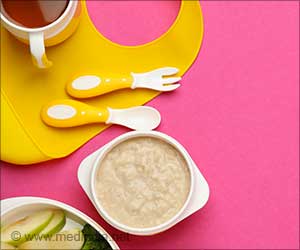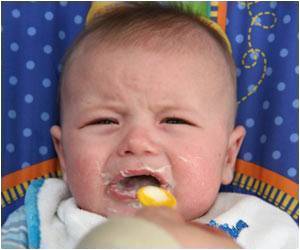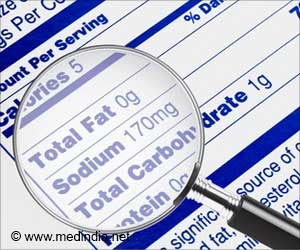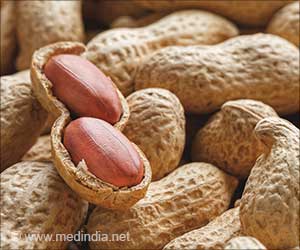Watch out: Toxic metals can be secretly hidden in your baby's food. Hence, reducing toxic metals in baby foods can save millions of babies from devastating health conditions.

What’s more, the U.S. doesn’t have the kind of strict regulations for commercially produced baby foods that parents might expect. That’s according to the findings of a recent University at Buffalo-led study that outlined risk prevention strategies for parents and health care professionals.
“It is concerning that there are gaps in food contaminant federal guidelines, particularly for baby foods. Parents might expect and trust that their infant’s commercially produced baby food is automatically protected by tightly regulated guidelines, but that is just not the case,” said the study’s lead author, Sarah J. Ventre, MD, clinical assistant professor in the Department of Pediatrics in the Jacobs School of Medicine and Biomedical Sciences at UB.
Ventre and her co-authors decided to examine the issue after reports of toxic metals in baby foods became more widespread in 2019, prompting families to raise safety concerns. The researchers reviewed several recent studies, and an analysis commissioned by Healthy Babies Bright Futures, all of which have reported that toxic elements such as arsenic, lead, mercury, and cadmium have been found in popular baby foods, in an effort to help parents, caregivers, and health care professionals make sense of the potential risks and offer guidance.
“As a pediatrician, my goal is to provide parents with the tools to keep their children healthy and safe,” said Ventre, who is also part of UBMD Pediatrics and serves as co-medical director for the Buffalo Public Schools.
After the U.S. Food and Drug Administration (FDA) developed an action plan for reducing toxic metals in baby foods in 2019, it issued draft guidance for lead in juices in April 2022 and lead in baby foods just last month. But the FDA has not yet offered guidance for arsenic, mercury, or cadmium, leading to concerns that regulatory changes may not be coming quickly enough.
‘Parents, beware: Baby foods may contain toxic metals such as arsenic, lead, mercury, and cadmium, which may pose a huge threat to health.’
Read More..




Read More..
Advertisement
Toxic Metals: A Dangerous Secret Ingredient in Baby Foods
Toxic elements can be consumed from a variety of sources, including water, baby formula, breast milk, homemade purees, and baby foods like cereals, fruits and vegetables, and fruit juices. When toxic elements are ingested with food or water, they are absorbed in the gastrointestinal tract and enter the bloodstream.“A big concern is that the testing reveals multiple toxic elements in many of the foods, which means that we are dealing with multiple issues,” says study senior author Katarzyna Kordas, PhD, associate professor of epidemiology and environmental health in UB’s School of Public Health and Health Professions.
“If you add to this the pesticides that are intentionally used when growing foods, the problem becomes almost too large to think about – do you address one toxicant at a time? Try to deal with all of them at once? Which foods do you focus on?” adds Kordas, who studies the health effects of exposure to lead and other harmful metals and chemicals, particularly in children.
Advertisement
Harmful Effects of Toxic Metal in Baby Food
Infants and young children are especially vulnerable to the effects of exposure to toxic elements, the researchers note, adding that little research has been done to identify the extent to which toxic element exposure from diet contributes to the health effects that can be caused in children exposed to such metals early in life. Those effects include cognitive function deficits, lower socioeconomic status, and difficult personality traits well into adulthood for children exposed to lead. Arsenic, meanwhile, is associated with lung and bladder cancers in adulthood.Advertisement
How to Choose Safe and Healthy Baby Food?
“We know that a wide range of foods are contaminated and that higher consumption of those foods is related to body levels of those contaminants in children,” Kordas adds. “But does the exposure to contaminants specifically through foods harm the health of young children? We don’t know that for sure, and it is uncomfortable to have few definitive answers for parents.”While some parents may want to completely eliminate certain food products because they fear they could be exposing their children to toxicants, the researchers say that’s not the best course of action. Instead, they suggest feeding children a varied diet consisting of many different foods and food types.
“It is important to focus on the fact that although foods have been found to contain toxic elements, several of these foods are rich in nutrients that are necessary for children’s growth and development,” says paper co-author Gauri Desai, PhD, clinical assistant professor of epidemiology and environmental health at UB. “Eliminating some foods from children’s diets may deprive them of the benefits that those foods have to offer.”
In addition to varying a child’s diet, the researchers also recommend ensuring clean drinking water, providing breast milk for the first 1-2 years if possible, and limiting juice intake.
When it comes to baby formula, while there is some data on which brands may have the lowest levels of heavy metals, it remains challenging to identify which formulas are safest, researchers say, adding that parents and health care providers can advocate for tighter U.S. Food and Drug Administration control parameters for infant formula.
“While providing guidance to parents and health care providers is important, the most conclusive way to protect the safety of food ingested by infants and children is through the establishment of stronger guidelines and enforcing those guidelines,” says Ventre.
Source-Eurekalert














